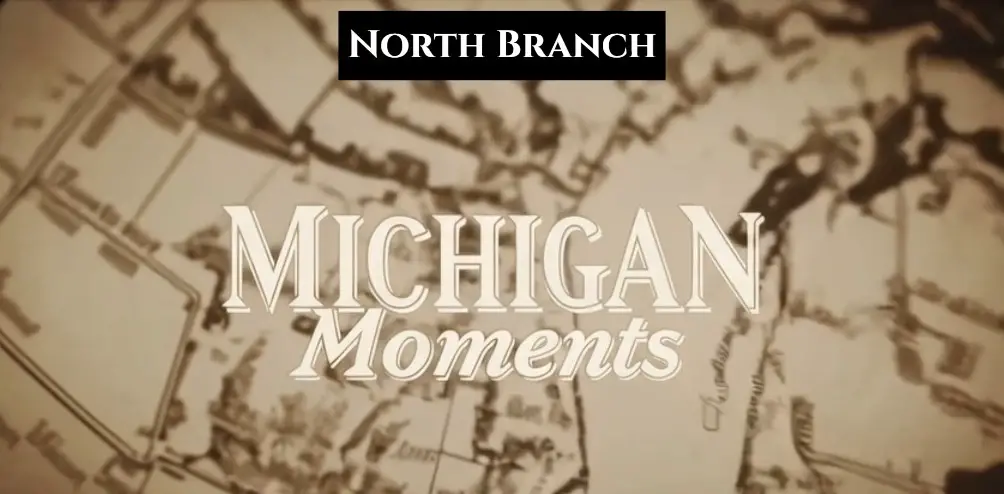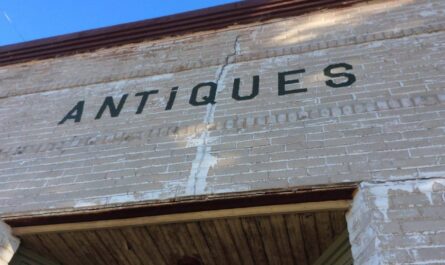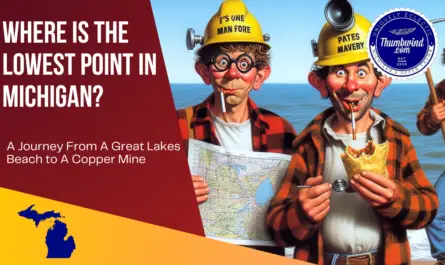Nestled in Lapeer County’s heartland, the village of North Branch may appear quaint and quiet today—but behind its peaceful charm lies a story rich in resilience, transformation, and small-town grit. From its early days as a riverside settlement to its growth through logging, agriculture, and rail development, the history of North Branch reflects the pioneering spirit of rural Michigan. This village has weathered devastating fires, embraced waves of industry, and nurtured community traditions that still thrive. In this introduction, we’ll set the stage for a journey through North Branch’s storied past, where the threads of progress and preservation intertwine in fascinating ways.
Table of Contents
Video – Hotel Melanie to Main Street Cars: North Branch, Michigan’s Early Years
Founding and Early Settlement
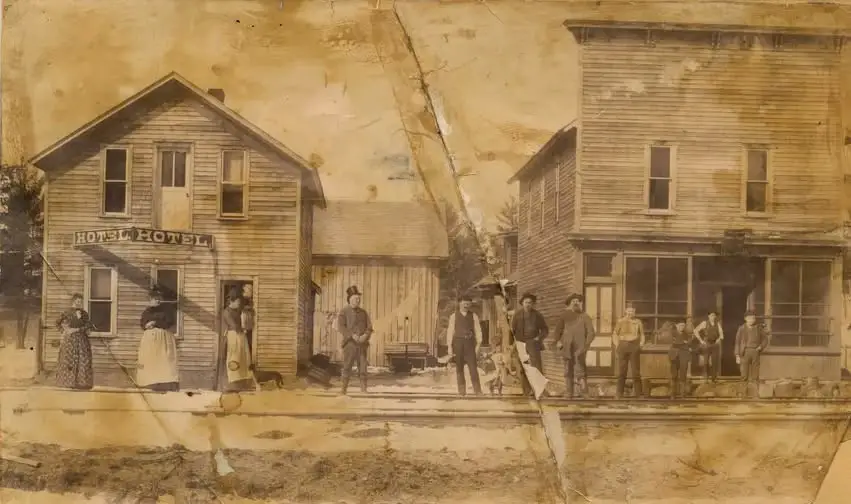
North Branch originated in the mid-1850s, not long after North Branch Township was organized on December 18, 1855. The first settlers, including Richard and Mrs. Beach and George and Mrs. Simmons, arrived around 1854-1856. By establishing a post office, general store, and trading post, John and Richard Beach laid the groundwork for a cohesive community—initially called Beachville—along the north branch of the Flint River, from which the village eventually took its name.
The image above prominently features the North Branch Hotel on the left, a simple two-story wooden structure with a sign reading “HOTEL.” To the right, another wooden commercial building housed a saloon, where Owen Trumbull lived in the upper quarters, according to the inscription. Unfortunately, all the buildings depicted in this photograph were lost to fire over the years, making this image a valuable historical record of North Branch’s past before modern development.
Incorporation and Name Change
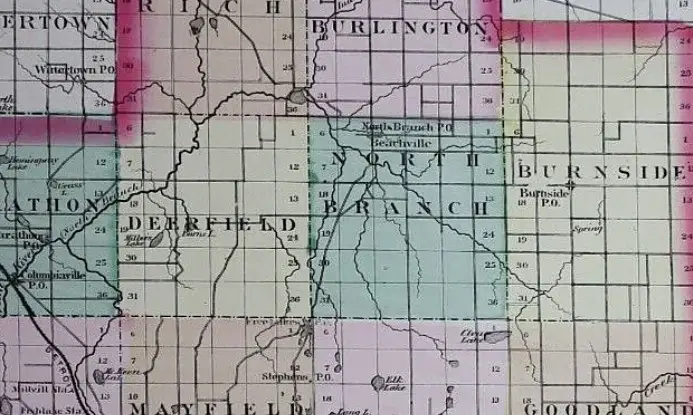
As the settlement flourished, Beachville was renamed North Branch to reflect its riverine identity. In 1881, after steady growth, it formally incorporated as a village, with a population of around 900. The prominence of Huron Street—originally the main east-west thoroughfare—helped anchor the village’s layout.
Economic Foundations – Lumber and Agriculture
North Branch’s early economy rode a dual wave: the extensive lumber industry and robust agriculture. Timber from northern Michigan was processed and transported via the village, and after deforestation, fertile farmland took hold. This shift marked a stable agricultural era following the logging boom.
Main Street’s Business Pulse
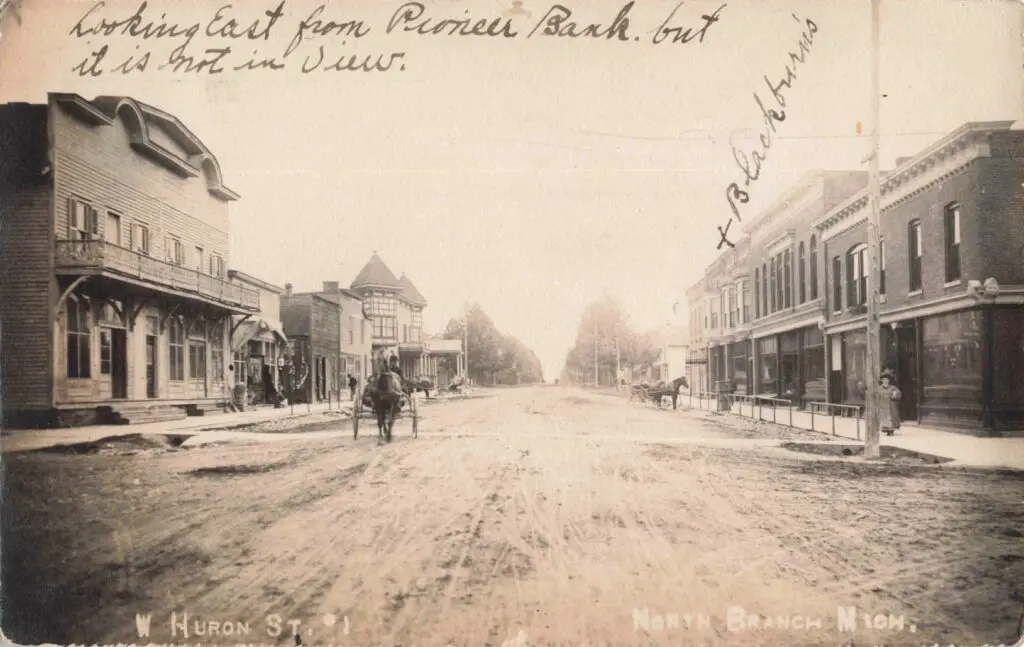
The history of North Branch gleaned from postcards and RPPC photos from the 1910s to 1940s show a busy Main Street lined with businesses: pharmacies, cafés, grocers, and service shops. It was here that neighbors met, newspapers were read, and decisions were made.
Hotels That Framed the Town’s Growth

North Branch was home to two landmark hotels during the early 20th century. The original Hotel Melanie was a striking brick structure with balconies, ironwork, and commercial storefronts on the ground level. It served as both lodging and a social center.
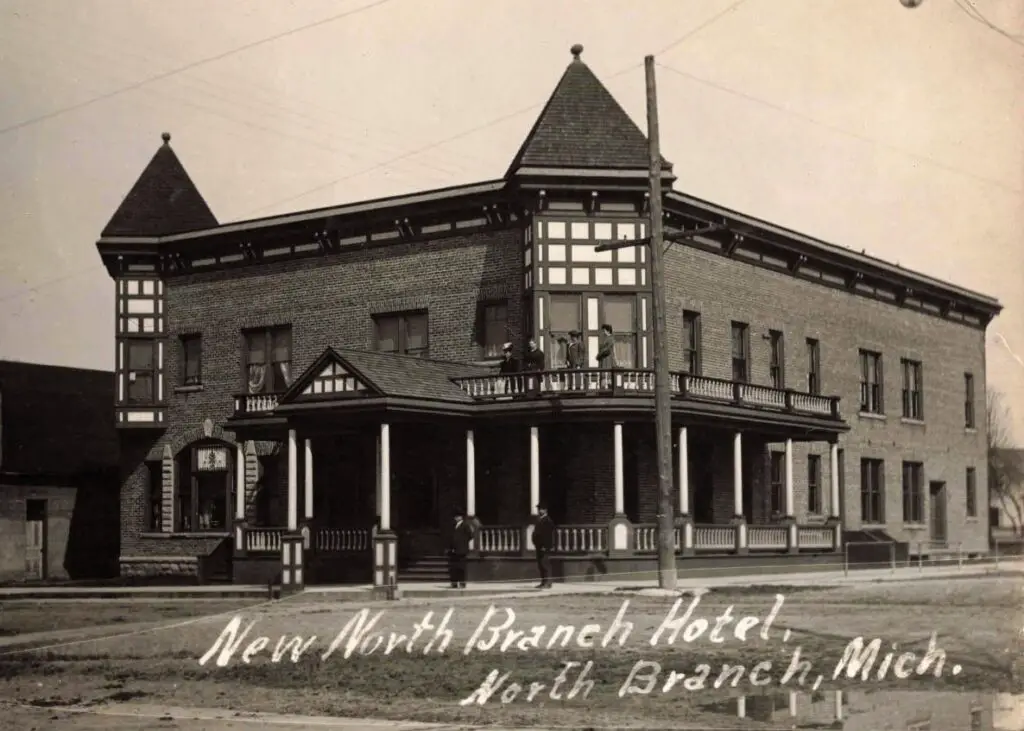
The New North Branch Hotel, built later, featured a more residential design with towers and wraparound porches.
Fires and Resilience
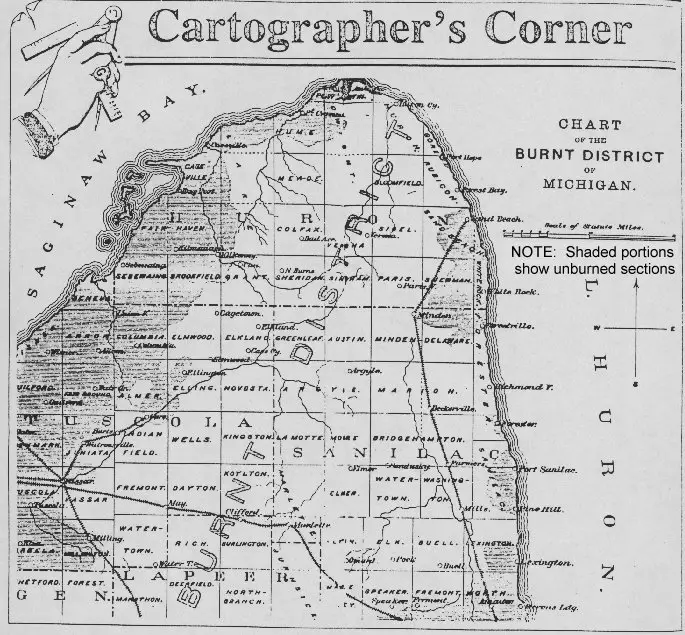
We can’t talk abou the history of North Branch without a mention of two major fires the significantly shaped the town’s development. The 1871 Great Michigan Fire and the devastating 1881 “Thumb Fire” swept through the village, destroying large swaths of homes and businesses. Yet each time, residents rebuilt—often using more resilient materials—demonstrating strong community spirit.
Mail and Movement
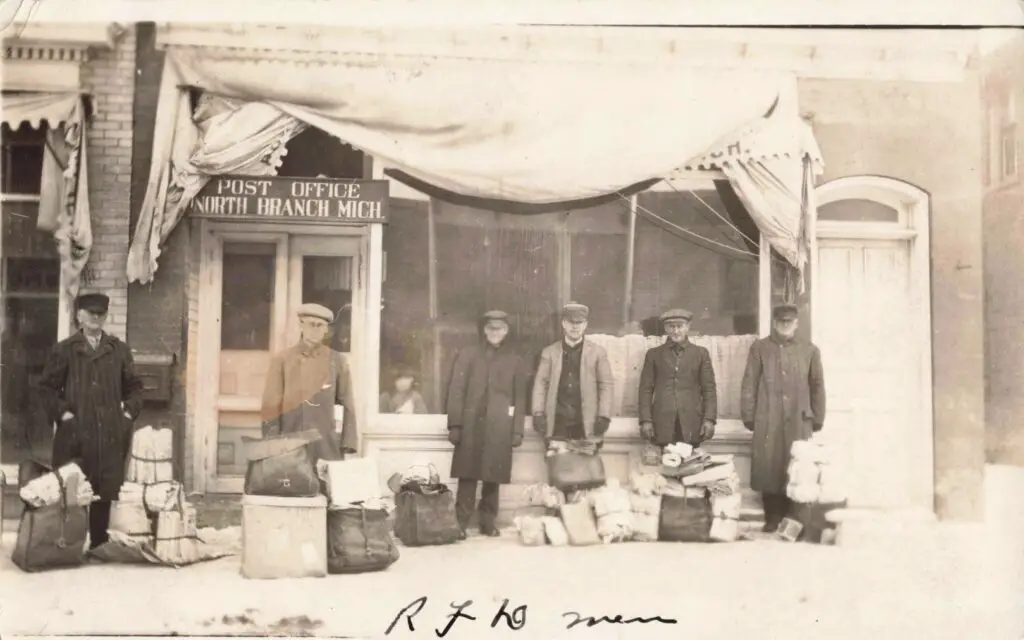
A standout image captures six rural postal workers outside the North Branch post office. Their presence shows how essential mail service was before widespread telephone access. These men covered miles of unpaved roads delivering letters, supplies, and sometimes even news from the warfront.
Pioneer State Bank No.?36
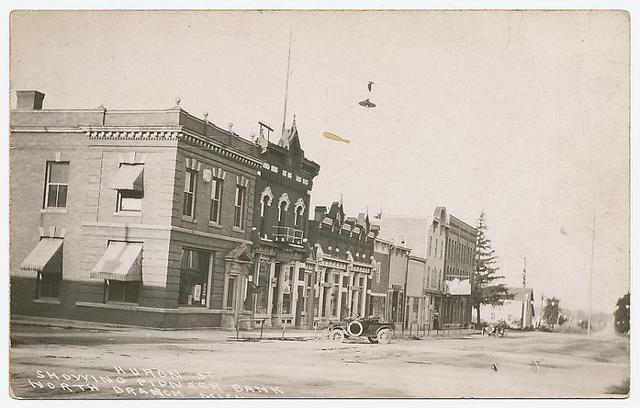
A key historic structure is the Pioneer State Bank No. 36, located at 4046 Huron Street. Established in 1885 and reconstructed in 1906 with distinctive Renaissance Revival architecture by Clark and Munger, the bank became an enduring symbol of local prosperity. It’s a Michigan State Historic Site and listed on the National Register of Historic Places.
The Grandstand and Community Events
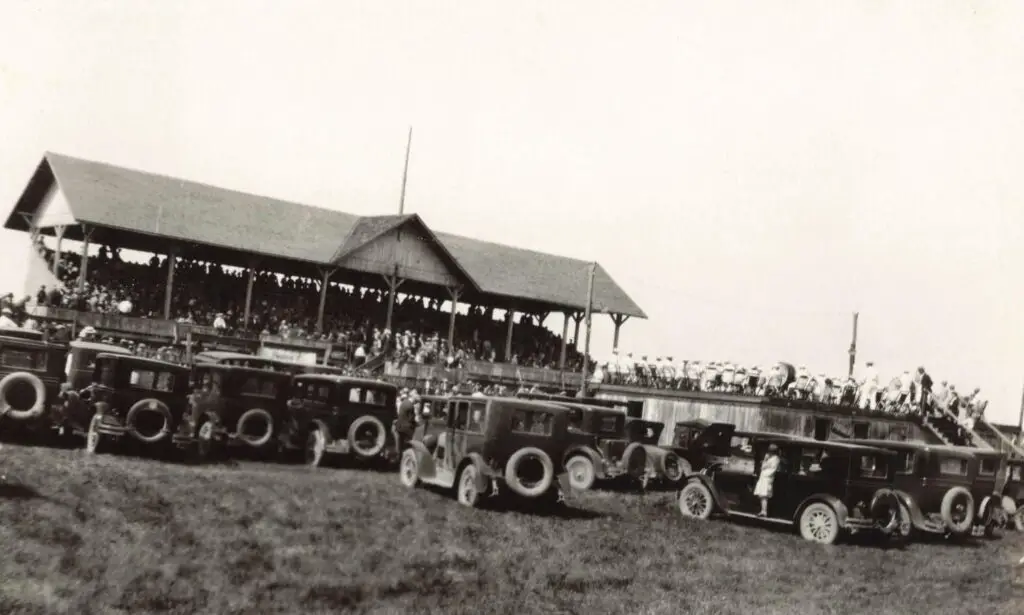
The grandstand in North Branch hosted events that brought everyone together. One of the most striking scenes is from a Fourth of July celebration in 1927. Families arrived in early automobiles to hear speeches, enjoy races, and spend time with neighbors.
Religious Institutions and Community Life
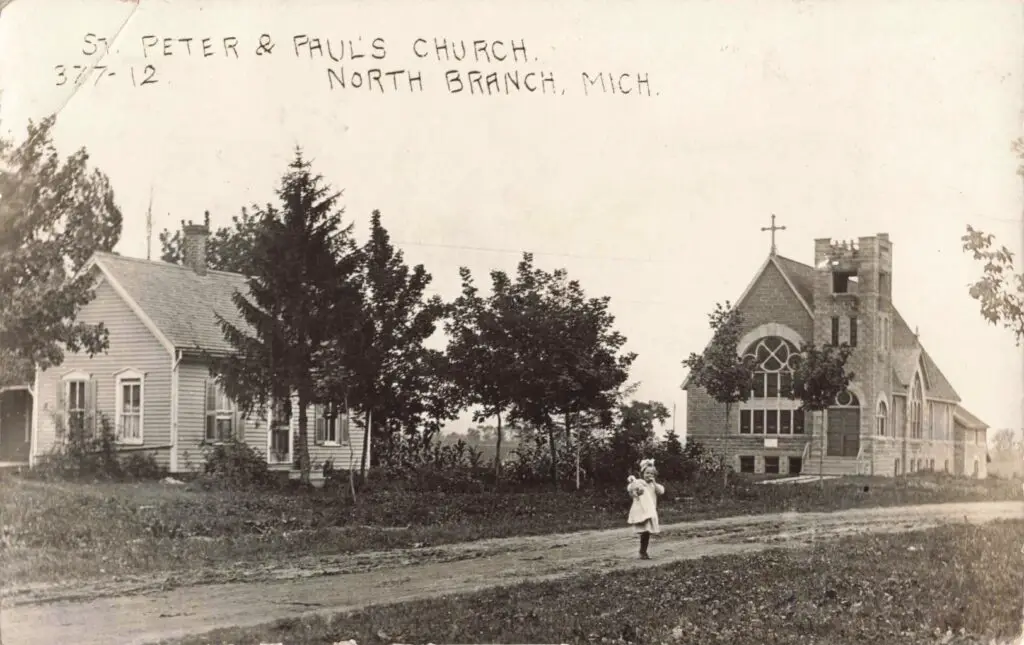
Spiritual life was guided by several faith communities. In 1906, the Episcopalian congregation, supported by Theodore Heenan, established a church that later became St. Peter & Paul Catholic Church. By 1913, it oversaw mission branches like St. Patrick’s in nearby Clifford. Subsequent years brought further building expansion and modernization.
Grand Trunk Station and Harper’s Elevator
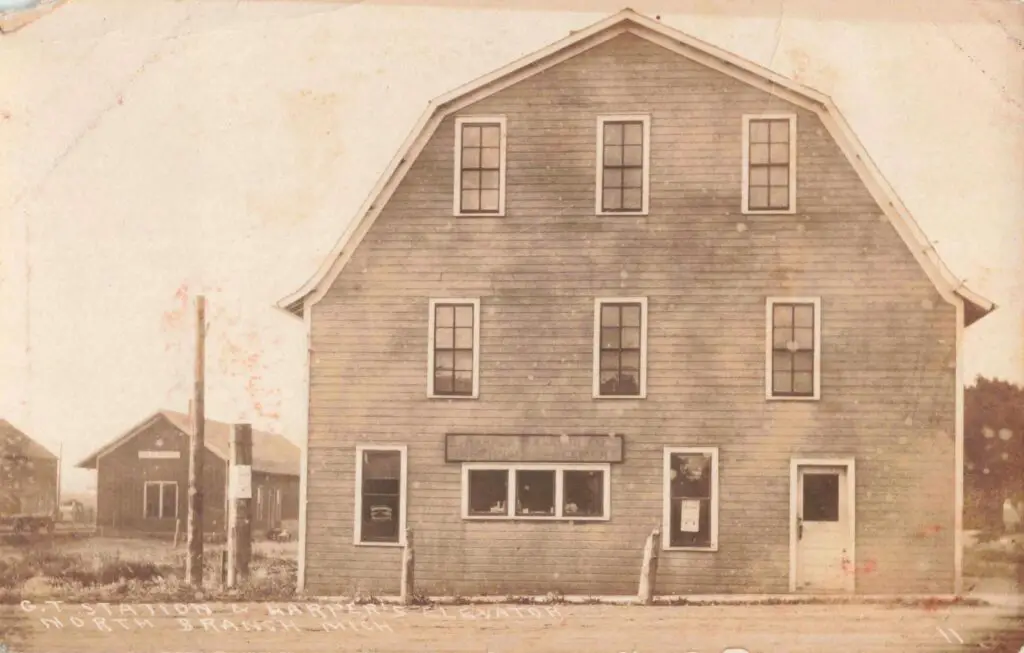
The Grand Trunk station was the town’s main artery. It brought goods in, sent grain out, and kept rural residents tied to the rest of the state. Farmers relied on elevators like Harper’s to store and load grain for market. Grain elevators weren’t just part of the economy—they shaped the skyline.
Heritage Sites and Museums
Today, visitors can explore North Branch’s heritage at the Orr Historical Museum, as featured in YouTube town tours. The museum holds rich exhibits and artifacts, making it one of Michigan’s most notable small-town museums.
North Branch History FAQs
What inspired the name North Branch?
The village was named after the north branch of the Flint River, which winds through town—a name officially adopted post-settlement from Beachville.
When did North Branch incorporate?
The village incorporated in 1881, following the establishment of its post office and trading center by the Beach family in the mid-1850s.
How severe were the fires of 1871 and 1881?
They were catastrophic. The 1871 Great Michigan Fire and 1881 Thumb Fire razed much of North Branch. The community’s resilience is evident in its fire-resistant rebuilding efforts.
What’s the Pioneer State Bank No.?36?
Founded in 1885 and rebuilt in 1906, this Renaissance Revival-style building is North Branch’s oldest bank and a designated historic landmark
Does North Branch have a museum?
Yes—the Orr Historical Museum serves as the local history center, with extensive displays that bring village stories to life .
What transport routes exist today?
The Grand Trunk Western Railroad still courses through town, complemented by state highway M?90, which links North Branch to nearby cities like Lapeer and Lexington.
Sources
- “North Branch, Michigan.” Wikipedia, Wikimedia Foundation.
- “North Branch City and Township History.” Genealogy Trails.
- “North Branch, Michigan.” Kiddle Encyclopedia.
- “North Branch’s Future is as Bright as Its Past is Colorful.” The County Press, View Newspaper Group.
- “Pioneer State Bank No. 36.” Wikipedia, Wikimedia Foundation.
- “Parish Cluster History.” SS. Peter and Paul Catholic Church.
- “M-90 (Michigan Highway).” Wikipedia, Wikimedia Foundation.
- “Orr Historical Museum Tour.” YouTube, uploaded by Towns of Michigan.

